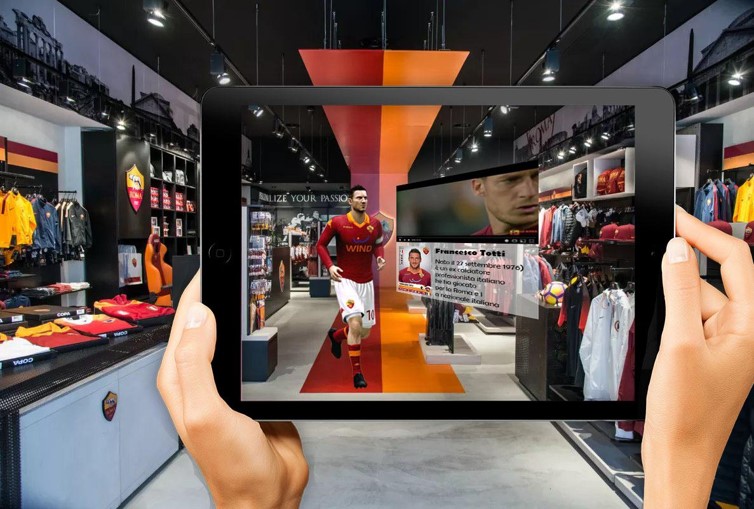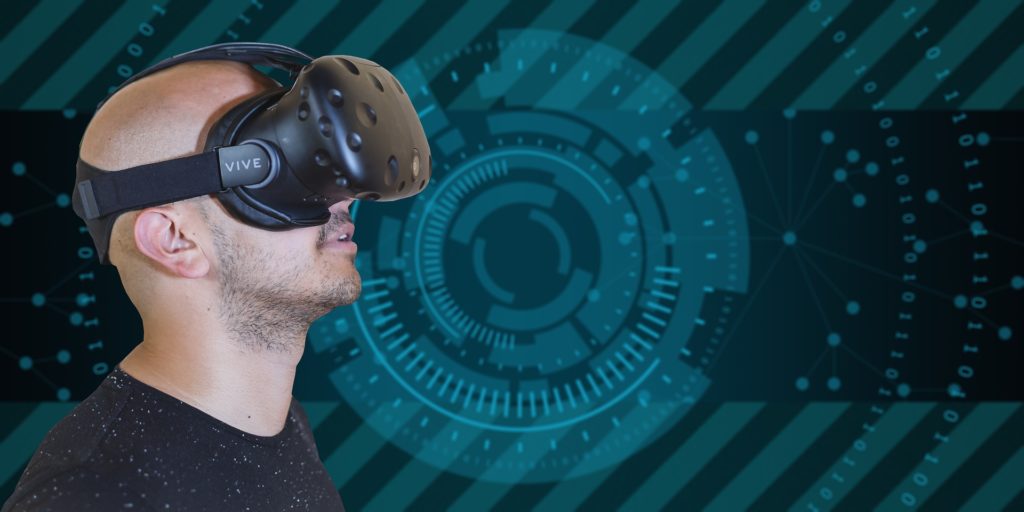All the differences between Augmented Reality, Virtual Reality and Mixed Reality
AR and VR are two acronyms that stand for, respectively, “Augmented Reality” and “Virtual Reality”, but what are the differences between Augmented Reality and Virtual Reality?

AUGMENTED REALITY
With “Augmented Reality” we refer to a technology capable of overlaying the digital world onto the offline world, “augmenting”, indeed, the user perception of the latter.
With AR, virtual reality and material reality are joined and become one dimension characterized by infinite possibilities and applications. In this way our world is enhanced with stimuli and perceptions which we couldn’t experience otherwise.
Using AR is very easy: it only takes a smartphone or a tablet.
In Android and iOs App Stores can be downloaded many apps which use Augmented Reality. It uses our mobile devices’ camera to add text or multimedia elements to the surrounding world, either with the help of a tracker or in a trackerless way.
AR can be used in many fields, like:
- Videogaming
- Publishing
- Restoration
- Advertising and Marketing Campaigns
- Entertainment
The applications of Augmented Reality are nearly infinite.

Another method, less common, to experience AR is with AR goggles which allow the enrichment of our reality without the need of a camera and a smartphone.
VIRTUAL REALITY
With Virtual Reality, instead, we refer to a technology capable of creating an entirely new digital reality. It is a total reconstruction of a virtual environment, a simulation of the reality that aims to the complete immersion of the user, who is led to a “new dimension”.
To use VR VR goggles are needed, so the user can actually see the new digital reality.
For a greater involvement, gauntlets, earphones and other devices can be used, to stimulate all the other senses (other than the sight alone) and to interact with Virtual Reality.
Even for Virtual Reality there are many applications, such as:
- Videogaming: who wouldn’t be attracted by the possibilty to play inside a totally new reality?
- Medicine: useful in simulations or during the preparation of complex surgeries and other medical procedures.
- Architettura e Interior Design: VR allows to actually live what has been projected, even before the beginning of construction, with the certainty that the VR goggles will show us a perfect match of the finished product.

Obviously these are only three among many other examples in which Virtual Reality can be applied. So, AR and VR are not the same thing. They’re surely similar technologies, which aim to digitally add something to the offline reality, but they differ by various aspects.
DIFFERENCES BETWEEN AUGMENTED REALITY AND VIRTUAL REALITY
Let’s reach some conclusion: what are the main differences between Augmented Reality and Virtual Reality?
Augmenting vs Creating: in AR we don’t find an actual reconstruction of an entire digital environment, such as in Virtual Reality. AR “augments” and enriches the surrounding reality, VR creates a new reality, in which we can totally immerse ourselves.
Goggles vs Smartphones: while the most used way to experience AR is smartphones, it’s not the same for Virtual Reality, where VR goggles are needed. VR for mobile devices is currently under study but there are very few apps that promise a completely immersive experience.

The Degree of Immersivity: in the end we can say that, among all the differences between Augmented Reality and Virtual Reality, the main one is the degree of immersivity. On the one hand the uses is still anchored to the reality of everyday life, with the addition of digital elements which aims to enhance it. On the other hand we find ourselves in and entirely new reality. Virtual Reality is definitely more immersive than Augmented Reality.
AR & VR: WHAT ABOUT THE MIXED REALITY?
What happens, though, when we find ourselves in front of the terms “Mixed Reality”? What do we mean by that?
Mixed Reality, as the name suggests, is a mix between AR and VR. We could describe that as a more immersive version of the standard Augmented Reality, thanks to the use of elements proper of Virtual Reality. In Mixed Reality, virtual objects aren’t just overlayed onto the surrounding reality, but they are anchored to it, doing so, the user can interact with them, creating a much more dynamic experience.
If you want to know the many applications of this new technologies and you want to know how to implement them in your activity, contact us filling in the form below! We at AR Market will be happy to clear up any confusion and to help you grow your business.
Do you want to learn more about high-tech? Read
Automotive : the augmented reality at the guide between smart helmets and virtual assistants
The amazingness of Augmented Reality for events and artistic exhibition
Do you want to start you project in AR? Contact us
